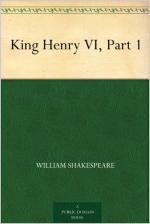|
This section contains 6,380 words (approx. 22 pages at 300 words per page) |

|
SOURCE: “The Many-Headed Monster in Henry VI, Part 2,” in Criticism, Vol. 38, No. 3, Summer, 1996, pp. 367-82.
In the essay below, Owens probes the political dimension of Henry VI’s imagery of severed heads.
The spectacle of the severed head is so common a feature of Elizabethan and Jacobean history plays that it invites identification as the emblem (or perhaps fetish) that most prominently characterizes the genre. Visual representations of severed heads occur in a broad range of history plays, including Thomas Lodge's The Wounds of Civil War, George Peele's Edward I, William Shakespeare's Henry VI, Parts 2 and 3, Richard III, and Macbeth, George Chapman's Caesar and Pompey, Thomas Dekker's Sir Thomas Wyatt, and John Fletcher and Philip Massinger's Sir John van Olden Barnavelt.1 The reasons for the prevalence of the severed head in the history play are not difficult to determine. The display of the head serves as a striking...
|
This section contains 6,380 words (approx. 22 pages at 300 words per page) |

|


